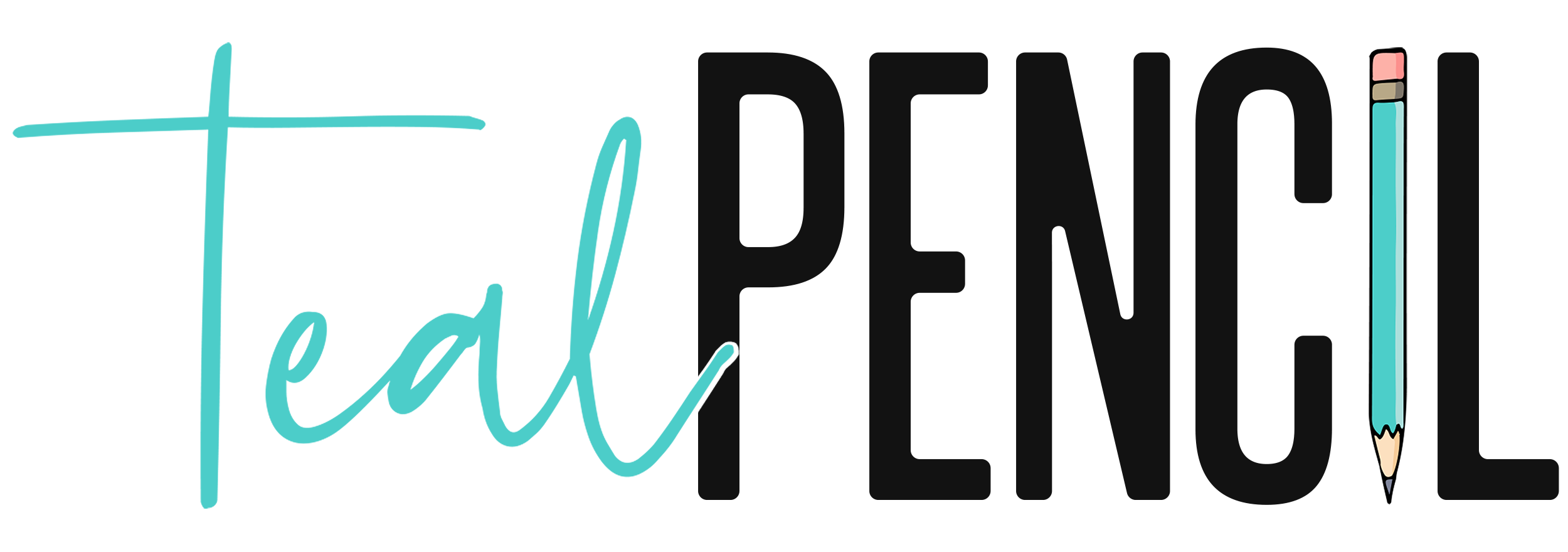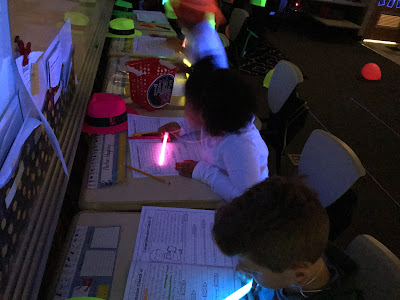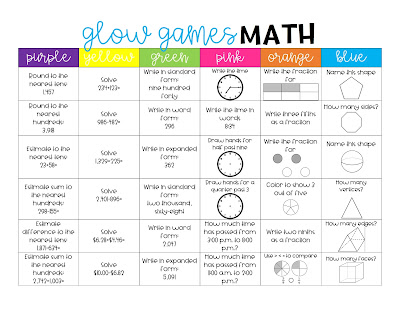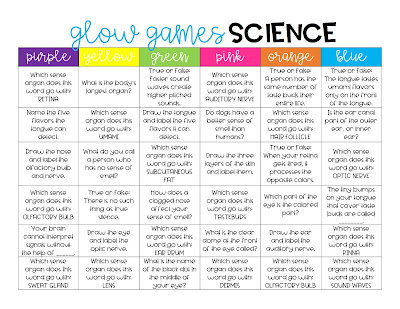We had SO MUCH fun in second grade with our Glow Day!
After hearing that I wanted to have a glow party, Jasmine led me to Hope King’s Glow Games blog post. I loved Hope’s games and decided to try them for our themed day. I mean, why reinvent the wheel when her games are kid-tested and approved? I made custom game pieces (more detail below) to go with what we are studying, and I added a reading comprehension activity. Here’s how our Glow Day turned out.
I started by sending an invitation to our Glow Day the week before. Our second grade team always plans a read-in for the first day following Thanksgiving break, winter break and spring break. We find that it’s a nice ease back into the routine, and we love finding reasons to celebrate reading.
We wanted to jazz things up from our typical read-in activities, so we dedicated the morning of our Glow Day to reading comprehension activities. I made students a pack of 20 seasonal reading passages from THIS pack on TPT. It’s a great one because students can use highlighters to find the answers to comprehension questions … and highlighters glow in black light! I left a light on in our coat room for any kid wanting more light, but most felt confident with the light of their glow sticks.
Kids could earn prizes for their completed passages. We bought THIS pack from Amazon because it has a variety of glow prizes. They had so much fun cashing in their points at the end of the day.
 |
| The prizes! |
Since we had already taken the time to black out the room and bring in black lights, I wanted to maximize the Glow Day activities. This is where I turned to Hope King for ideas. In fact, click over to her post for more details about the games and how to set them up. I ended up setting up glow bowling, glow Jenga and glow ring toss. Once I had decided on the games, I created evaluation pieces to go with each. I made two BINGO games; one for math (click HERE to download the freebie) and one for our current science unit, The Anatomy of the Five Senses (that glow game freebie can be found HERE).
Both BINGO games contain review information for what we’ve learned so far. The way it worked is that every game had glowing pieces, and when students engaged a certain color (knocked over a pink pin in bowling, pulled a green block in Jenga, or had their ring land on a yellow marker in ring toss, for example), they had to find that color on their BINGO sheet and choose a problem to solve.
I love how Hope says to make sure all kids are solving every problem (not just when it’s their turn). So when one kid pulled an orange Jenga piece and placed it on top, for example, all kids in that group would stop to solve a problem from the orange column of the game piece. Then they could mark it down on their answer sheet, and the next kid would have their turn at the game. One thing to note … kids will knock down multiple pins in bowling, so I had them choose one color on their game boards based on the knocked-down pins. This was strategic, and could help them get their BINGO. (We also encouraged kids to wear white or neon colors to school that day, which made the whole event even cooler.)
I also made these cute neon boards out of neon colored paper and dollar store plastic picture frames for kids to use to solve problems since I knew their recording sheets wouldn’t be big enough to show work.
I gave every kid the math review to work on. For every BINGO, they got to choose a glow prize. If a group completed their math BINGO boards, they got to start on the science game board.
It was definitely a fun time! It was well worth the effort … we’ll be doing this again next year!

















